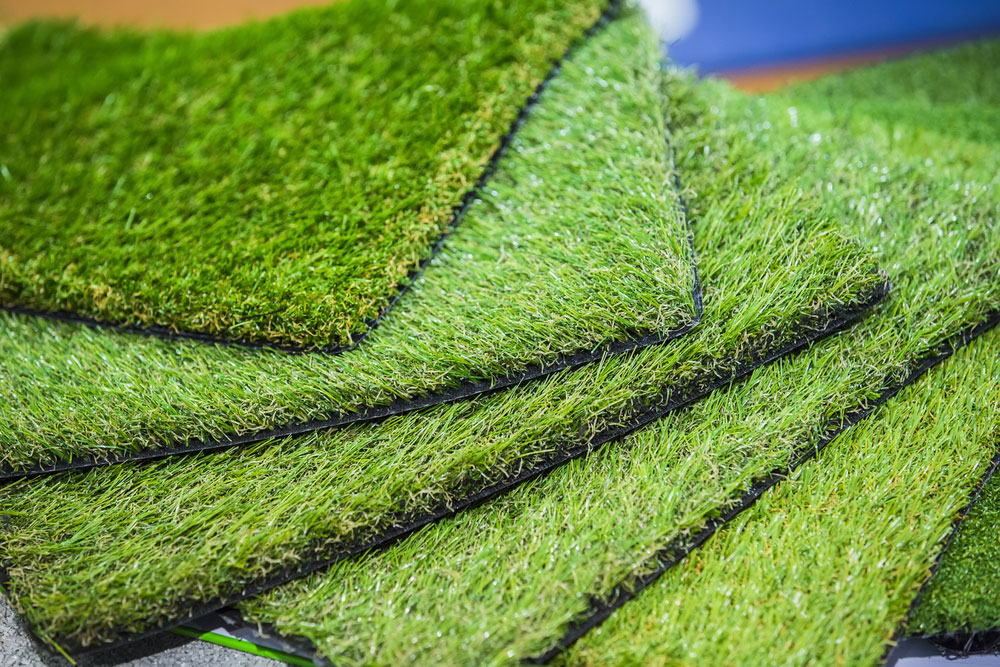Delve Into the Environmental Benefits of Opting for Synthetic Grass Solutions
The fostering of fabricated lawn remedies offers a compelling chance to address pressing ecological difficulties. By significantly decreasing water usage and minimizing the application of unsafe chemicals, these alternatives not just advertise lasting landscaping but additionally shield regional communities. Moreover, the reduced carbon impact connected with decreased maintenance tasks adds to a more sustainable approach to land monitoring. The effects of these benefits prolong beyond simple conservation initiatives, raising concerns about their lasting impact on habitat conservation and overall eco-friendly equilibrium. Exploring these measurements discloses a complicated interaction worth taking into consideration.
Water Conservation Advantages
One of one of the most substantial benefits of artificial turf is its capability to save water. Traditional lawn yards need considerable watering, especially in areas prone to dry spell or water restrictions. In contrast, man-made grass does not require watering, substantially decreasing the general demand for water sources. This feature is specifically advantageous in deserts where water deficiency is a pushing worry.
By eliminating the need for normal watering, synthetic grass adds to lasting landscape practices and assists minimize the environmental influence of extreme water usage. The conservation of water expands to the reduction of runoff, which can lead to soil erosion and river pollution.
Additionally, the setup of synthetic grass enables communities and home owners to allocate water sources more efficiently, concentrating on essential usages such as alcohol consumption water and agriculture. The change in the direction of fabricated lawn not just advertises responsible water use however likewise aligns with more comprehensive environmental goals targeted at maintaining all-natural sources.
As neighborhoods progressively prioritize sustainability, the water conservation advantages of synthetic grass present a compelling situation for its fostering in domestic and commercial landscape design tasks.
Lowered Chemical Usage
The change to synthetic grass considerably decreases the reliance on chemical therapies frequently used in natural yard upkeep. Standard turf administration commonly includes the application of fertilizers, pesticides, and herbicides to promote development and control bugs. These chemicals can pose dangers to human health and wellness, local wild animals, and the atmosphere, contributing to dirt and water contamination.
On the other hand, synthetic grass eliminates the demand for these damaging materials. When installed, it needs minimal upkeep, mainly being composed of regular cleaning and seldom infill replenishment. This reduction in chemical usage not just benefits the immediate atmosphere yet likewise adds to more comprehensive environmental security. By decreasing the release of synthetic compounds right into the ecological community, synthetic grass advertises healthier soil and water systems.
Furthermore, the absence of chemical overflow related to synthetic grass installations helps safeguard regional waterways from contamination, sustaining marine life and keeping biodiversity. Arizona turf. As neighborhoods increasingly focus on sustainable techniques, going with synthetic grass presents a viable option that lines up with environmental preservation goals. With this shift, building proprietors can delight in lush eco-friendly rooms without jeopardizing ecological health, leading the means for a much more lasting future
Reduced Carbon Footprint

Furthermore, the installation of synthetic grass can cause substantial water preservation. Natural yards call for considerable quantities of water for watering, which not only includes in the carbon impact related to water extraction and therapy yet also strains neighborhood water sources. In contrast, synthetic grass requires minimal maintenance, needing no watering, consequently significantly minimizing water use and its linked energy expenses.
In addition, the long life of synthetic grass contributes to its lower carbon influence. With a life-span of approximately 15 years or even more, the need for frequent substitutes is diminished, resulting in less waste and webpage lower energy consumption in production and throwing away traditional grass choices. On the whole, artificial turf offers a lasting alternative for ecologically mindful landscaping.
Habitat Conservation
Environment conservation is a critical consideration in the dispute over landscaping options, specifically when comparing synthetic grass to natural grass. All-natural turf lawns commonly require considerable upkeep, consisting of the usage of herbicides, chemicals, and fertilizers, which can adversely influence regional ecological communities. These chemicals can seep into the soil and rivers, damaging native vegetation and fauna and disrupting regional habitats.
In comparison, check my reference synthetic lawn offers a possibility to decrease the eco-friendly footprint of landscaping. By choosing synthetic grass, homeowners can minimize the interruption of natural environments connected with traditional yard treatment methods. Synthetic lawn eliminates the requirement for damaging chemicals, thereby shielding nearby wildlife and preserving the honesty of surrounding environments. The setup of fabricated lawn can lead to the conversion of former turf areas into more biodiverse landscapes, such as pollinator gardens or indigenous plant locations, which can sustain regional wild animals.
Ultimately, the change to synthetic grass not just preserves water and minimizes maintenance efforts but also cultivates a more unified connection between human activities and the native environment, advertising habitat conservation at the same time.
Long-Term Sustainability
Long-lasting sustainability is a critical aspect in examining the advantages of synthetic grass over typical lawn lawns. Among one of the most significant advantages of fabricated lawn is its longevity; it can last as much as 15-20 years with minimal maintenance, whereas all-natural yard needs frequent reseeding and substitute. This long life reduces the demand for constant sources, such as water, fertilizers, and pesticides, which are essential for preserving a healthy yard lawn.
Additionally, fabricated turf adds to a reduction in carbon discharges associated with yard care tools. Conventional grass frequently need gas-powered mowers, leaners, and blowers, every one of which add to air pollution. Turf installation phoenix az. On the other hand, synthetic grass Read More Here removes the need for such tools, promoting a cleaner environment
Additionally, the manufacturing of man-made lawn increasingly uses recycled products, boosting its sustainability profile. As makers take on environmentally friendly methods, the ecological footprint of synthetic grass remains to lessen.

Final Thought
The adoption of synthetic grass options offers significant ecological advantages, including considerable water conservation, reduced reliance on dangerous chemicals, and a reduced carbon impact. Moreover, artificial turf aids in preserving all-natural habitats by lessening land disruption and promoting long-lasting sustainability with using long lasting products. Collectively, these factors emphasize the capacity of synthetic grass to contribute favorably to environmental health and supply a sensible choice to conventional landscaping techniques in a significantly resource-conscious world.
In comparison, man-made turf does not require watering, dramatically decreasing the overall need for water sources. By reducing the launch of synthetic substances into the community, synthetic lawn promotes much healthier dirt and water systems.
Furthermore, the installment of fabricated grass can result in significant water conservation. In contrast, synthetic grass requires marginal maintenance, calling for no watering, thereby considerably reducing water usage and its linked energy expenses.
